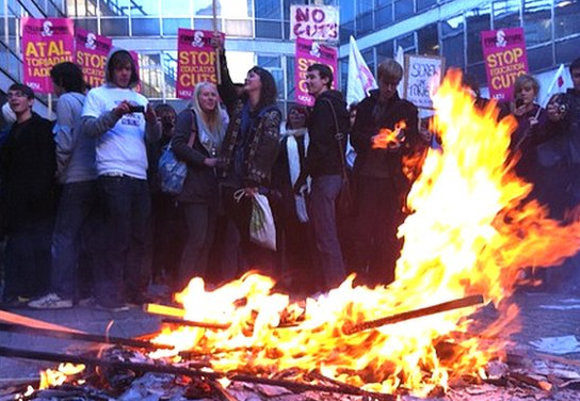|
The
spending spree of the government of Iceland essentially bankrupted their
national economy. The governments of Greece, Ireland, Spain and Portugal now
face the reality of having to curtail government spending to save their national
economies and avoid the economic meltdowns of Iceland or Zimbabwe. They believed
that government spending on public works projects such as infrastructure
development would stimulate and sustain economic growth. They now face the
reality that such action neither creates wealth nor does it stimulate a national
economy out of a downturn, let alone assure and sustain long-term economic
growth.
Several European
governments now face an economic event that parallels what occurred in America,
when the stock market collapsed in 1920. The government of the day cut expenses
and kept itself out the economy as the Federal Reserve curtailed the printing of
new currency. By the end of 1921, the American economy had recovered. Job losses,
or rather lay-offs, were short-term compared to the long-term job losses and the
loss of the manufacturing sector that are occurring today in the USA, the result
of massive government spending and massive printing of new currency. There may
be some hope for economic recovery if various European governments were to
follow the example of the US administration of 1920 and 1921.
Massive
government spending that prevailed across much of Western Europe has a parallel
in the high-tech sector of the 1990s. Easy availability of government funding
fuelled a boom in the high-tech sector and caused wages and prices to escalate
in numerous parts of that sector. Price escalations indicated possible areas of
new business opportunity, but the massive influx of easy funding had generated
misleading and distorted market signals. A massive number of companies responded
to the misleading market signals by developing new products and services aimed
at enhancing the productivity of the end users. The result was the high-tech
meltdown and dot-com bust. Subsequent attempts by the US Federal Reserve to
restart the stalled high-tech sector through an infusion of new funding had no
effect.
 The American government continues to spend and their Federal Reserve prints
excess new paper currency as the American economy stumbles and falters. Printing
excess currency may lower the value of the dollar against other currencies.
Proponents of this policy claim that it offers American industry the opportunity
to create new jobs by exporting goods and services into foreign markets. However,
a previous round of excess printing of American currency led to the high-tech
meltdown, the dot-com bust, the mortgage meltdown and the collapse and
bankruptcy of the American automobile manufacturing industry.
The American government continues to spend and their Federal Reserve prints
excess new paper currency as the American economy stumbles and falters. Printing
excess currency may lower the value of the dollar against other currencies.
Proponents of this policy claim that it offers American industry the opportunity
to create new jobs by exporting goods and services into foreign markets. However,
a previous round of excess printing of American currency led to the high-tech
meltdown, the dot-com bust, the mortgage meltdown and the collapse and
bankruptcy of the American automobile manufacturing industry.
One area of the economy
that has attracted political favour and was supposed to have created massive
numbers of new high-paying jobs was the green-tech sector that involves clean,
renewable energy. But most of the contemporary green-tech sector technologies
such as wind power and photovoltaic solar energy requires massive amounts of
government subsidies and/or higher electric power prices. Higher electric power
prices reduce consumer spending and can cause related job losses in remote areas
of the economy.
Government investment in
the green energy sector and related subsidies may actually result in a transfer
of jobs within the greater economy. A gain of 2 high-paying green sector jobs
may result in a loss of 3 or 4 lower-paying jobs in other less visible and even
invisible sectors of the greater economy. Despite Spain having invested more
heavily in their green-tech energy sector than other European nations, their
youth unemployment rate stands at over 40%, an indication that massive
government spending in the green-tech sector may not necessarily translate into
an abundance of new jobs for a nation's youth.
|

